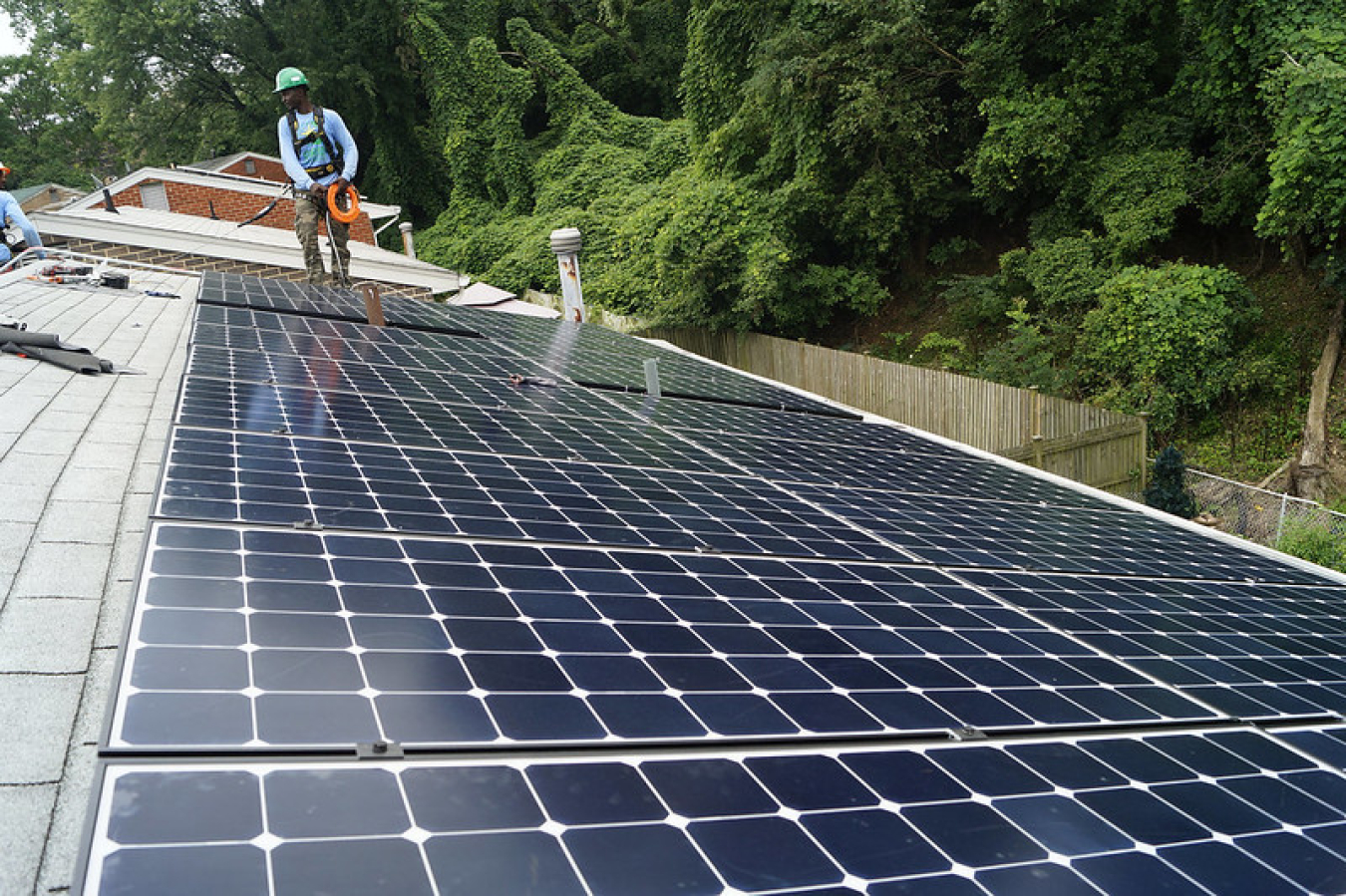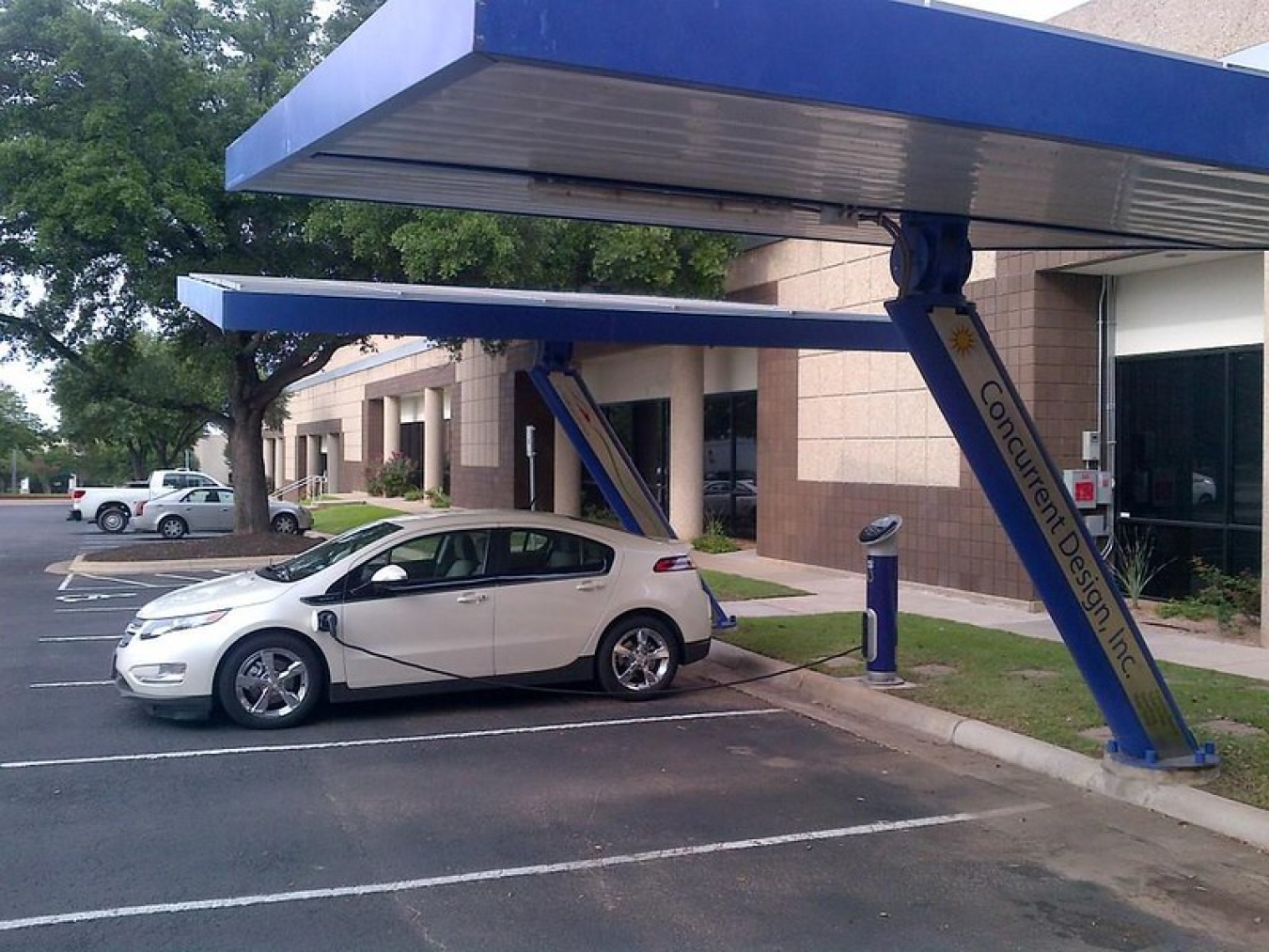From Day One, the Biden Administration has prioritized lowering costs for working families, addressing the climate crisis, increasing our energy independence, and boosting our competitiveness in the global clean energy market. Right now, Americans are...
April 1, 2022From Day One, the Biden Administration has prioritized lowering costs for working families, addressing the climate crisis, increasing our energy independence, and boosting our competitiveness in the global clean energy market. Right now, Americans are facing high energy prices—both from economic recovery after the COVID-19 pandemic and oil market impacts of the war in Ukraine—that make a transition to clean energy even more urgent.
Clean energy is inherently homegrown and makes us less vulnerable to the volatility and price shocks that have plagued the global oil market. The Biden Administration is working to make sure every American can reap the benefits of these technologies by pulling every lever through a whole-of-government approach.
The U.S. Department of Energy (DOE) is already working to speed our nation’s progress toward 100% clean power by 2035 and net-zero emissions by 2050, including through the $62 billion in new clean energy funding through the Bipartisan Infrastructure Law. DOE programs in this new legislation are already helping families lower their energy bills, including nearly $3.2 billion for the Weatherization Assistance Program.
President Biden’s climate and clean energy incentives package to Build a Better America will turbocharge our nation’s clean energy economy. These game-changing clean energy investments would lower energy costs and make clean energy technologies affordable to more Americans, while tackling the climate crisis and creating millions of good-paying, union jobs.
Lowering Home Energy Costs for American Families
The average American household spends more than $1,850 a year on home energy bills, not including transportation costs. For many low-income households and communities of color, that means they have to spend too much of their paycheck on energy. According to DOE’s Low-Income Energy Affordability Data (LEAD) Tool, the national average energy burden—the percentage of income spent on energy costs—is three times higher for low-income households than for other households. According to the U.S. Energy Information Administration’s Residential Energy Consumption Survey, the energy burden for households of color is 25% to 50% higher than for white households.

Installing clean and efficient technologies in a home—like rooftop solar, heat pumps, and LED lightbulbs—can save residents hundreds to thousands of dollars per year, making it more affordable to turn on the lights, heat their homes in the winter, and cool them in the summer. But some of these technologies have a significant upfront cost—and that’s where the clean energy incentives come in. The tax credits and rebates in the President’s agenda will lower the installation cost of a huge range of clean energy technologies, making them more accessible for working families and enabling more Americans to unlock the yearly energy cost savings of these technologies.
For example, these tax credits will cut the cost of installing rooftop solar for a home by 30%, or more than $7,500 for an average system. By helping them get solar on their roofs, these tax credits will help millions more families unlock an additional average savings of $9,000 on their electricity bills over the life of the system.
Other tax credits and rebates in the agenda will make home electric and energy efficient appliances like washers and dryers, furnaces, water heaters and refrigerators much more affordable, unlocking yearly savings for American families. Just switching from a traditional air conditioning and heating system to a more energy efficient heat pump would save the average U.S. homeowner hundreds of dollars per year. One study by Northeast Energy Efficiency Partnerships found that when heat pump units designed specifically for colder regions are installed in the Northeast and Mid-Atlantic regions, the annual savings are more than $450 when compared to electric resistance heaters and more than $900 when compared to oil systems.
Saving Money on the Road
Electric vehicle (EV) sales doubled in 2021—and falling prices have a lot to do with it. Already, many EV models are becoming cheaper than their fossil fuel-powered equivalents, especially when factoring in the $500 to $1000 per year that EV owners save on fuel, and $6,000 on maintenance they save over the lifetime of the vehicle.
In fact, EV owners save every time they plug in. As of April 1st, 2022, it costs about $63 to fill up a tank of gas for an average family sedan. For a new electric car to go an equivalent distance, it would only cost about $12 to charge at home or work and about $27 at a public fast charger—meaning an EV driver saves up to $50 by charging up today.

The President’s agenda will spur a giant leap forward for EV affordability by cutting the sticker price of a new electric vehicle by up to $12,500. This will make EVs affordable for more Americans right when they drive their new vehicle out of the dealership, so they can benefit from the ongoing savings that come with EVs.
Countering Inflation
President Biden’s agenda to Build a Better America will also help counter inflation by growing an affordable, reliable clean energy economy. Already, solar is the cheapest form of energy, and these additional incentives, combined with DOE’s existing work under the Bipartisan Infrastructure Law, will launch projects for a range of clean energy sources that will help drive their prices down further.
Additional programs will help communities in every pocket of the nation access these cheap, abundant, reliable energy sources. For instance, the Clean Energy and Sustainability Accelerator will invest billions of public and private dollars in community-led projects that decrease pollution, grow clean energy technologies, and tackle the climate crisis.
Another way the President’s agenda will make our energy cleaner and cheaper is by investing in domestic manufacturing, bolstering our supply chains for clean energy, and creating good-paying, union jobs. These efforts, combined with the Bipartisan Infrastructure Law, will create 1.5 million new jobs per year on average for the next decade.
President Biden is focused on making and deploying clean energy here at home, which will lower energy costs for working families, strengthen our economic competitiveness and increase our energy independence—all while tackling climate change.

